Supporting Caregivers With Clear Guidance From Hybrid Health Teams

Caregivers: The Hidden Pillars of Health and Wellness
Caregivers play a crucial yet often overlooked role in the healthcare system, providing essential support to those with chronic illnesses, disabilities, or age-related needs. Their physical and emotional well-being, however, is frequently compromised by the demands of caregiving. This article explores how hybrid health teams—comprising health professionals and community resources—can offer clear guidance and comprehensive care programs to support caregivers’ wellness, reduce their burden, and ultimately improve outcomes for both caregivers and care recipients.
The Unique Health Challenges Faced by Caregivers

What health risks do caregivers face?
Caregivers face notable physical and emotional health risks stemming from the continuous demands of caregiving responsibilities. These challenges include persistent fatigue, sleep disturbances, and a decline in immune function, making them more susceptible to illness. Additionally, caregivers are at a higher risk for cardiovascular issues, such as hypertension and heart disease, linked to prolonged stress and strain.
This combination of health concerns positions caregivers as "hidden patients" within the healthcare system. Their well-being is often overlooked despite the essential support they provide to care recipients. Addressing these risks is crucial to sustaining caregivers' health and their ability to provide care.
Ongoing efforts in health promotion and support programs aim to mitigate these risks by focusing on caregiver wellness, offering practical education, and facilitating access to resources dedicated to reducing caregiver burden and improving overall health outcomes.
Evidence-Based Health Promotion Programs Tailored for Caregivers

What are effective care programs for promoting wellness?
Evidence-based health promotion programs designed for caregivers focus on multiple dimensions of well-being, including chronic disease self-management, falls prevention, behavioral health, physical activity, and nutrition. Programs such as the Chronic Disease Self-Management Program (CDSMP) empower caregivers and care recipients with self-care skills, leading to improved health assessments, reduced depression, and better overall quality of life. For example, CDSMP has been associated with fewer emergency room visits, resulting in average savings of $364 per participant.
Falls prevention programs like 'A Matter of Balance' and 'Stepping On' directly address safety concerns common among older adults and caregivers by reducing fear of falling and actual fall rates. These programs contribute to significant healthcare savings, including Medicare savings of $938 per participant and a 30% reduction in falls, with $134 net savings per participant.
How do these programs benefit caregivers and care recipients?
Caregivers, often referred to as 'hidden patients,' face physical and emotional health challenges such as fatigue, sleep disturbances, and stress-related illnesses. Health promotion programs that provide multicomponent interventions—including education, emotional support, skills training, and respite services—can alleviate caregiver burden, reduce depression, and enhance their ability to provide quality care.
Educational components that focus on medication management and symptom control boost caregivers' confidence and reduce the risk of errors. Programs like 'Building Better Caregivers' and 'Powerful Tools for Caregivers' have seen high engagement, with caregivers making up over a quarter of participants since 2010.
Strategic engagement practices—such as offering flexible session times, virtual participation, community-based locations, and fostering supportive networks—improve caregiver participation and completion rates.
In addition, nurses play a pivotal role in assessing caregiver needs, providing tailored information, supporting skill development, and connecting caregivers to community resources. This comprehensive approach not only supports caregiver wellness but also ensures safer and more effective care for recipients.
| Program/Strategy | Target Area | Benefits and Outcomes |
|---|---|---|
| Chronic Disease Self-Management Program (CDSMP) | Chronic Disease Management | Improved health assessment, reduced depression, fewer ER visits, $364 savings per person |
| Falls Prevention ('A Matter of Balance', 'Stepping On') | Fall Risk Reduction | Reduced fear of falling, 30% fall reduction, Medicare savings $938 per participant |
| Multicomponent Interventions | Caregiver Emotional & Physical Health | Reduced burden, depression, stress; improved caregiving capacity |
| Flexible Engagement Strategies | Program Participation | Higher completion rates among caregivers, better access through virtual and varied scheduling |
| Nursing and Community Support | Caregiver Education & Resources | Enhanced caregiver competence, improved patient safety, stronger caregiver-patient-professional collaboration |
Chronic Disease Self-Management Programs (CDSMP): Enhancing Caregiver and Recipient Health
What are effective care programs for promoting wellness?
Evidence-based health promotion programs, such as the Chronic Disease Self-Management Program (CDSMP), play a crucial role in improving wellness for caregivers and their care recipients. CDSMP is designed to help participants develop skills in managing their chronic conditions, boosting their confidence in handling daily health challenges.
Participants in CDSMP often report better health self-assessments, indicating improved perceptions of their overall health. Additionally, the program is effective in reducing symptoms of depression, which can significantly enhance participants' quality of life. By addressing both physical and emotional health, CDSMP supports comprehensive wellness.
An important practical benefit of CDSMP is its impact on healthcare utilization. Those who complete the program typically experience fewer emergency room visits. This reduction not only reflects better health management but also translates into considerable financial savings. On average, CDSMP saves about $364 per person in healthcare costs.
By fostering self-efficacy, CDSMP empowers both caregivers and care recipients to take control of their health, leading to improved daily functioning and reduced stress. This empowerment is a foundational aspect of effective health promotion programs, making CDSMP a valuable tool in community health efforts.
Falls Prevention Initiatives: Building Safety and Reducing Costs

What are effective care programs for promoting wellness?
Falls prevention programs, such as 'A Matter of Balance' and 'Stepping On', play a crucial role in promoting wellness by addressing both physical safety and emotional well-being.
These programs focus on reducing the fear of falling, which is a common concern that can limit activity and increase fall risk. By building confidence and teaching strategies to improve balance and mobility, participants experience greater safety in daily life.
Impact on Fall Rates and Healthcare Costs
Research shows these initiatives lead to significant outcomes:
- A 30% reduction in fall rates among participants.
- Medicare savings of approximately $938 per participant.
- An overall net savings of $134 per participant after accounting for program costs.
Such results demonstrate tangible health improvements and substantial financial benefits, highlighting the value of integrating these programs into caregiver and care recipient wellness plans.
Broader Benefits
Beyond reducing falls, these programs enhance quality of life by addressing psychological barriers and fostering an environment of community support. This dual focus empowers caregivers and care recipients to maintain independence and reduce emergency room visits related to falls.
By utilizing evidence-based falls prevention interventions, healthcare systems and community organizations contribute to safer living environments, reduced healthcare burdens, and improved well-being among vulnerable populations.
Caregiver Participation Trends in Community-Based Programs

High engagement rates among caregivers
Caregivers tend to engage in health education programs at slightly higher completion rates than the general participant population. This trend underscores caregivers’ motivation to seek support and education, which can enhance their caregiving capacity and overall well-being.
Programs like 'Building Better Caregivers' and 'Powerful Tools for Caregivers'
Since 2010, over 14,000 caregivers have participated in community-based chronic disease self-management education programs, representing 26% of total participants. Among these, programs such as 'Building Better Caregivers' and 'Powerful Tools for Caregivers' have been popular choices. These programs offer targeted support addressing the unique physical, emotional, and social challenges caregivers face.
Preferred group settings and familiar venues
Caregivers especially benefit from and prefer group-based sessions held in familiar and accessible locations like libraries and senior centers. Such settings not only foster connection and shared experiences but also help caregivers feel more comfortable and supported. The social aspect of these venues enhances program adherence and satisfaction.
Overall, community-based programs that combine practical skills with supportive group environments have successfully attracted and retained high levels of caregiver participation, contributing to better health outcomes for both caregivers and care recipients.
Strategies to Effectively Engage and Retain Caregivers in Wellness Programs
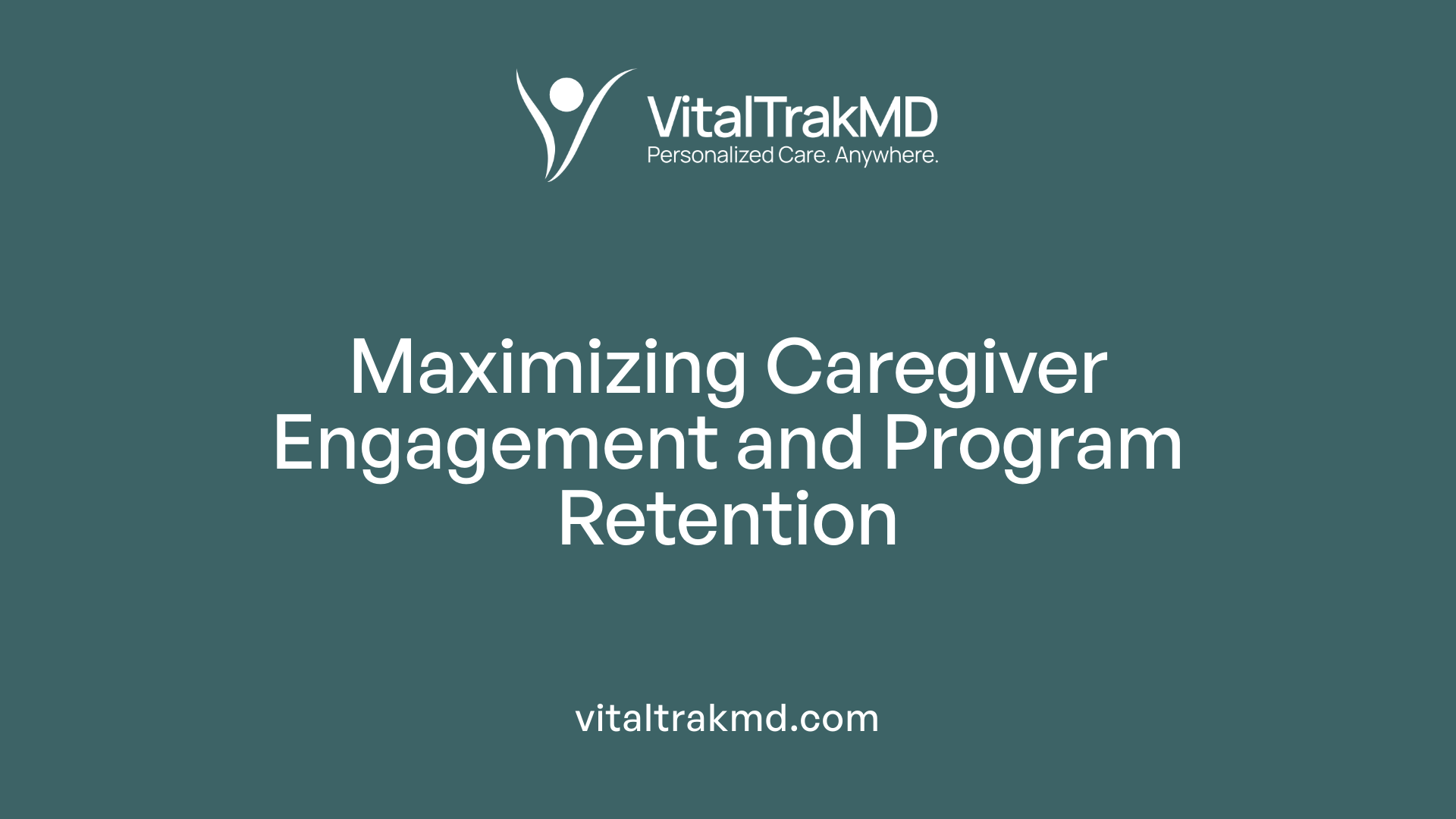
Clear Communication of Program Benefits
Effectively engaging caregivers begins with clearly articulating the benefits of wellness programs. Caregivers need to understand how participation can improve their health and caregiving abilities, such as reducing stress or preventing health complications. Providing practical resources alongside this communication helps build their confidence and commitment to enroll.
Flexible Participation Modes
Offering flexible options maximizes accessibility for caregivers, who often juggle demanding schedules. Virtual sessions, as well as evening and weekend classes, accommodate those balancing caregiving duties with work or other responsibilities. This flexibility encourages sustained participation by reducing common barriers.
Emotional Support and Community Building
Caregivers benefit significantly from programs that foster emotional support and connect them with peers experiencing similar challenges. Group sessions in familiar community locations like libraries or senior centers not only enhance engagement but also build a sense of community, mitigating feelings of isolation.
Partnerships with Healthcare Providers and Community Organizations
Collaborating with healthcare providers and community organizations enhances outreach and trust. These partnerships help identify caregivers who can benefit most from programs and provide ongoing support, ensuring caregivers receive tailored education and resources linked to their care recipients' needs.
Through these strategies, wellness programs can better support caregivers, improving both their well-being and their capacity to care effectively.
Multicomponent Interventions: Addressing Caregiver Burden and Mental Health

What Are Multicomponent Interventions?
Multicomponent interventions combine several approaches including education, emotional support, respite services, and skills training aimed at alleviating the complex challenges faced by caregivers. This comprehensive strategy ensures that caregivers receive diverse types of assistance tailored to their unique needs.
How Do These Interventions Reduce Burden, Depression, and Stress?
Caregiving can trigger high levels of stress, depression, and physical exhaustion. By blending education—such as teaching medication management and symptom control—with support services like counseling and home visits, these interventions help mitigate emotional strain and reduce feelings of overload.
Respite care provides caregivers temporary breaks, which counteracts burnout and promotes mental relaxation. Skills training further equips caregivers with practical problem-solving techniques that enhance their confidence and reduce anxiety around care tasks.
What Are the Benefits for Caregiver Well-Being and Capacity?
Implementing multicomponent interventions improves caregivers’ overall health and emotional stability. When caregivers experience less depression and stress, they maintain greater resilience and are better able to provide high-quality care to their loved ones.
Moreover, these interventions foster social connections and community belonging, which are crucial for sustained caregiver wellness. Enhancing caregiver capacity ultimately benefits both the caregiver and care recipient by supporting safer, more effective care environments.
Targeted Education for Medication Management and Symptom Control

How does targeted education improve caregiver competence?
Caregivers often manage complex medication regimens and symptom control tasks for their care recipients. Providing them with targeted education enhances their knowledge and skills, boosting their confidence and competence. This education includes training on medication schedules, dosages, recognizing side effects, and managing symptoms effectively.
How does caregiver education reduce medication errors and patient harm?
Educated caregivers are less likely to make medication errors, which can lead to adverse health outcomes or emergency interventions. By understanding proper medication management and symptom monitoring, caregivers help prevent mistakes such as missed doses or incorrect administration. This reduces patient harm, hospital readmissions, and supports overall safety in home care.
Many evidence-based programs incorporate these educational components, equipping caregivers with practical tools and problem-solving strategies. As a result, caregivers become better prepared to handle health challenges, contributing to improved patient outcomes and reduced healthcare costs.
The Crucial Role of Discharge Planning and Communication

Coordination between healthcare professionals and family caregivers
Effective discharge planning relies heavily on seamless coordination between healthcare professionals and family caregivers. This collaboration ensures caregivers are fully informed about the patient's care needs, medication regimens, and warning signs to watch for after leaving the hospital. Clear communication at this stage empowers caregivers with the knowledge and confidence necessary to provide safe and appropriate care.
Impact on patient safety and caregiver preparedness
Good communication reduces uncertainties for caregivers, decreasing the risk of mistakes that could compromise patient safety. When caregivers understand care instructions and feel supported, they can manage complex care tasks more effectively. This preparedness improves the overall quality of care and helps prevent complications that may arise from misunderstanding or inadequate follow-through.
Reduced readmissions and adverse outcomes
Strong discharge planning and communication have been shown to reduce hospital readmissions and avoid adverse outcomes like neglect or medication errors. By equipping caregivers with the tools and information they need, hospitals can decrease unnecessary emergency visits and improve the health trajectory of care recipients. This not only benefits patient wellbeing but also helps reduce healthcare costs associated with preventable issues.
Supportive Interventions to Promote Caregiver Mental Wellness
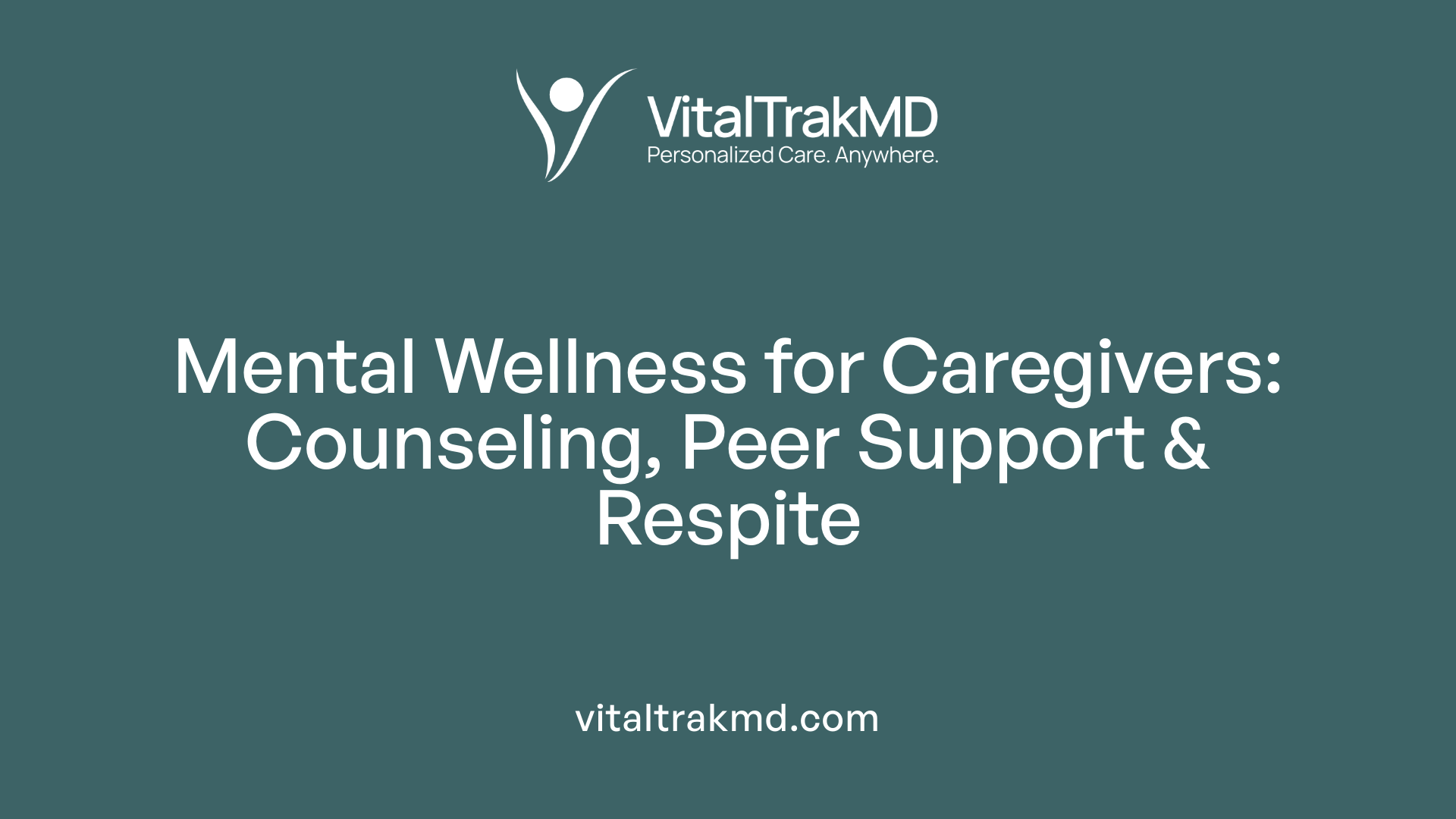
How Do Counseling, Home Visits, Social Support, and Respite Care Benefit Caregivers?
Supportive interventions such as counseling, home visits, social support networks, and respite care have been shown to play crucial roles in promoting caregiver mental health. Counseling provides caregivers with a safe space to express emotions, learn coping strategies, and gain psychological support. Home visits allow healthcare professionals to assess caregiver needs directly and offer personalized assistance, ensuring caregivers have the resources they need to provide effective care.
Social support connects caregivers with peers, family, and community resources, reducing feelings of isolation that often accompany caregiving. Respite care offers temporary relief by providing alternative care for the recipient, affording caregivers time to rest and recharge. Together, these interventions create a supportive environment that sustains caregiver well-being.
How Do These Interventions Reduce Depression, Anger, and Stress in Caregivers?
By addressing emotional, physical, and social challenges, these supportive measures effectively reduce negative feelings frequently experienced by caregivers. Counseling helps alleviate depression and anger by fostering emotional expression and teaching stress management skills. Home visits and social support enhance a caregiver's confidence and reduce stress by delivering practical assistance and peer reassurance.
Respite care directly targets caregiver burnout and stress by offering breaks from caregiving duties, which is critical in preventing exhaustion and maintaining long-term caregiving capacity. Collectively, these interventions improve mental wellness, enabling caregivers to sustain their roles more effectively while maintaining their own health.
Nurses as Vital Links in Supporting Caregivers
Assessing caregiver needs
Nurses play a crucial role in identifying the physical, emotional, and social needs of caregivers. Since caregivers often face health challenges such as fatigue, sleep disturbances, and stress-related conditions, nurses assess these risks to tailor appropriate support. Through ongoing evaluation, they ensure caregivers receive the help they require to sustain their caregiving roles.
Providing tailored information and education
Once needs are identified, nurses offer personalized education focused on practical caregiving skills. This includes guidance on medication management, symptom monitoring, and problem-solving strategies. Tailored education empowers caregivers to confidently address complexities of care, reducing risks like medication errors and improving patient safety.
Linking to community resources to ensure safety and wellness
Nurses connect caregivers to community-based health promotion programs and supportive services such as chronic disease self-management education, falls prevention initiatives, counseling, and respite care. These linkages foster caregiver wellness by reducing depression and stress, while enhancing caregiving capacity. Collaborations with local organizations like senior centers or libraries also facilitate participation in group programs, which promote emotional support and community connection.
Through these roles, nurses serve as pivotal facilitators within the caregiver-patient-professional triad, encouraging collaborative decision-making. This collaboration not only respects caregiver autonomy but also improves overall quality of care and patient outcomes.
Fostering Collaborative Decision-Making Among Caregivers, Patients, and Professionals
Respecting the Caregiver-Patient-Professional Triad
Effective care relies on acknowledging the interconnected roles of caregivers, patients, and healthcare professionals. This triad model encourages mutual respect and shared responsibility, ensuring that decisions about health and care are made collaboratively.
Improving Autonomy and Reducing Caregiver Burden
When caregivers are included as active partners in decision-making, their insight and experience enhance patient care while also empowering caregivers. This participation improves their sense of autonomy and decreases feelings of burden and stress commonly experienced in caregiving roles.
Enhancing Quality of Care
Collaboration within this triad enhances communication and coordination, which leads to better-informed decision-making and safer care practices. These improvements not only benefit patient outcomes but also safeguard caregiver well-being by distributing responsibilities and fostering supportive relationships.
By embracing a respectful, cooperative approach among caregivers, patients, and professionals, the quality of healthcare delivery is elevated, leading to a more balanced and sustainable caregiving environment.
The Integration of Behavioral Health Support in Caregiver Wellness Programs
Addressing Emotional Health Challenges
Caregivers often face considerable emotional health challenges due to the demanding nature of their roles. These include fatigue, sleep disturbances, depression, anxiety, and stress, which can adversely affect their overall well-being. Recognizing caregivers as "hidden patients," wellness programs emphasize the importance of supporting their mental health to sustain caregiving capacity and improve quality of life.
Incorporating Counseling and Peer Support
To effectively support caregivers’ emotional health, wellness programs integrate counseling services and peer support groups. These interventions provide caregivers with opportunities to express their feelings, reduce isolation, and learn coping strategies in a safe environment. Multicomponent programs combining education, emotional support, and stress reduction have demonstrated success in lowering depression and caregiver burden.
Peer-led groups and counseling sessions are often delivered in accessible settings such as libraries, senior centers, or virtually, increasing participation rates. Programs like ‘Powerful Tools for Caregivers’ include structured sessions that foster community connections and promote emotional wellness. Offering flexible participation options, including evening or weekend availability, further encourages engagement.
By prioritizing behavioral health support through counseling and peer networks, caregiver wellness programs create a foundation for resilience, improved mental health, and sustained ability to provide care.
Incorporating Physical Activity in Caregiver Support Programs
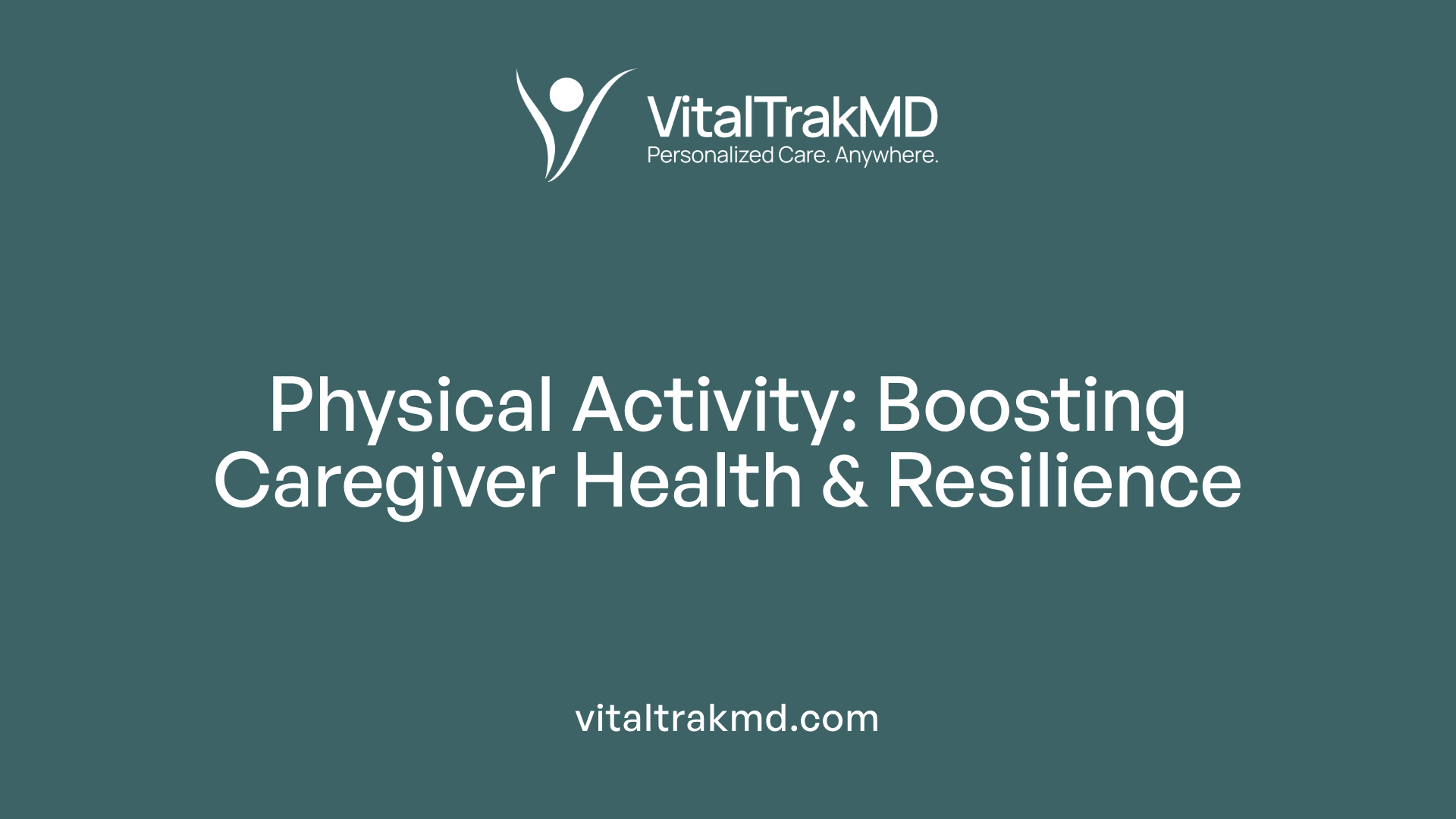
Benefits of exercise for caregiver wellness
Physical activity plays a crucial role in promoting the health and well-being of caregivers, who often face physical and emotional challenges due to their caregiving responsibilities. Engaging in regular exercise helps reduce stress, improve mood, boost immune function, and lower the risk of cardiovascular problems—common concerns among caregivers. Exercise also combats fatigue and sleep disturbances, helping caregivers maintain their energy and focus.
Programs encouraging safe physical activity
Several evidence-based programs encourage safe physical activity among caregivers. Falls prevention programs such as 'A Matter of Balance' and 'Stepping On' not only reduce the fear of falling but also improve safety and mobility. Participants in these programs experience significant benefits including a 30% reduction in fall rates and notable healthcare cost savings, such as Medicare savings of $938 per participant. These programs are often delivered in supportive group settings that foster community and peer encouragement, which further motivates caregivers to engage in physical activity.
What are successful strategies for weight loss?
Successful weight loss strategies for caregivers include regular physical activity—targeting at least 150 minutes of moderate-intensity exercise per week—combined with balanced, calorie-controlled diets. Incorporating such strategies within caregiver wellness programs not only aids in weight management but also enhances overall physical and mental health, enabling caregivers to sustain their caregiving roles more effectively.
By integrating physical activity with flexible participation options and supportive resources, caregiver programs can better meet the unique health needs of caregivers while empowering them to maintain their own wellness alongside caregiving duties.
Nutrition Education as a Cornerstone of Wellness Support
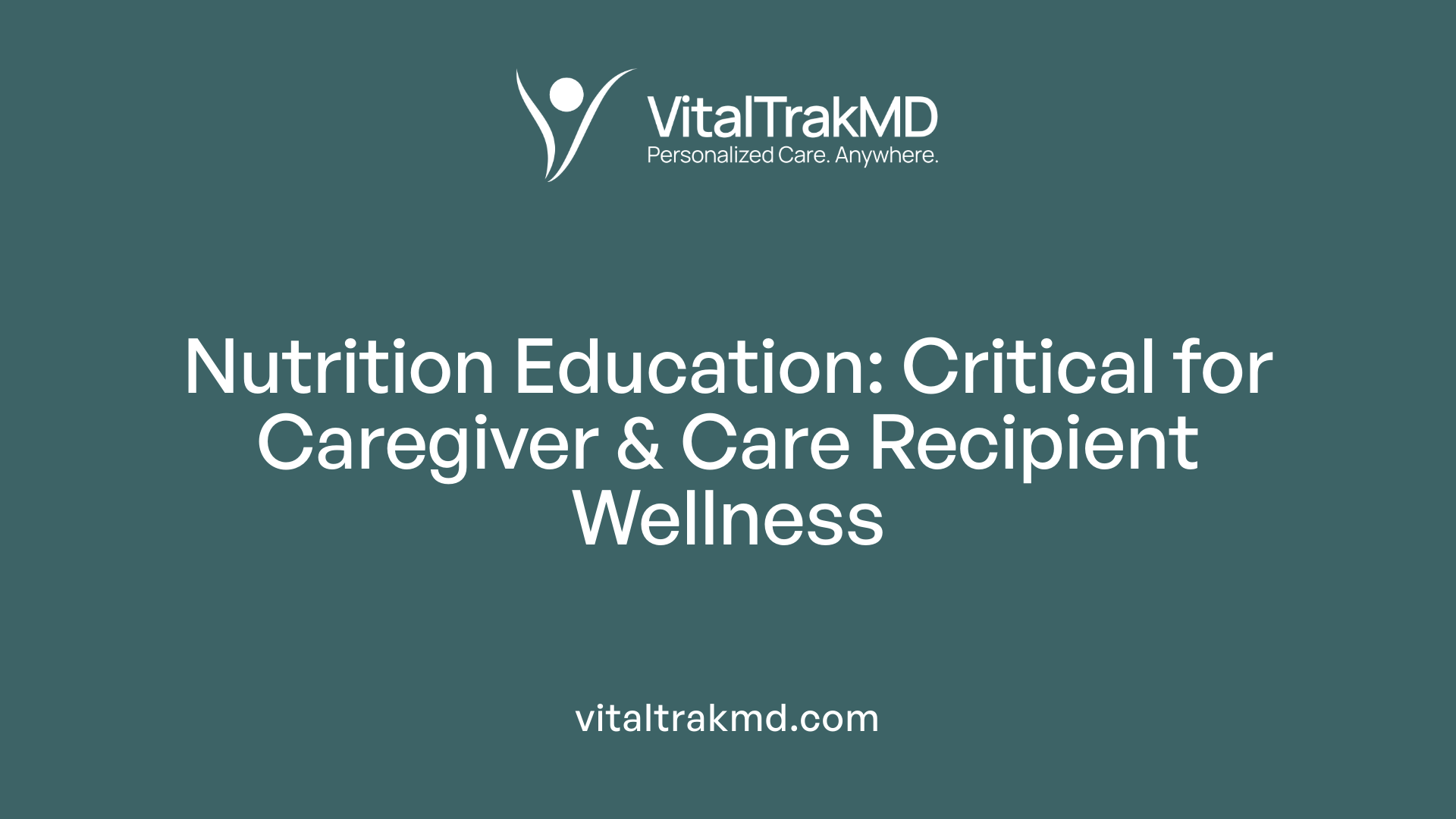
What Are Effective Care Programs for Promoting Wellness?
Nutrition education plays a vital role in wellness programs aimed at caregivers and their care recipients. These programs empower caregivers by providing practical guidance on healthy eating habits, which is essential for managing weight, preventing chronic diseases, and improving overall health.
Effective nutrition education programs emphasize meal planning strategies tailored for both caregivers and those they care for. This includes advice on creating balanced diets rich in essential nutrients, which supports immune function and energy levels—the foundation for sustained caregiving.
By integrating nutrition education into broader wellness initiatives, such programs address the specific challenges caregivers face, such as limited time and resources for meal preparation. Offering resources and tools for efficient, nutritious meal planning helps caregivers maintain their own health while ensuring that care recipients receive appropriate dietary support.
This approach not only promotes physical well-being but also helps manage chronic conditions effectively, reducing caregiver stress and enhancing quality of life for both parties.
Measuring Success: Evaluating the Impact of Caregiver Wellness Programs
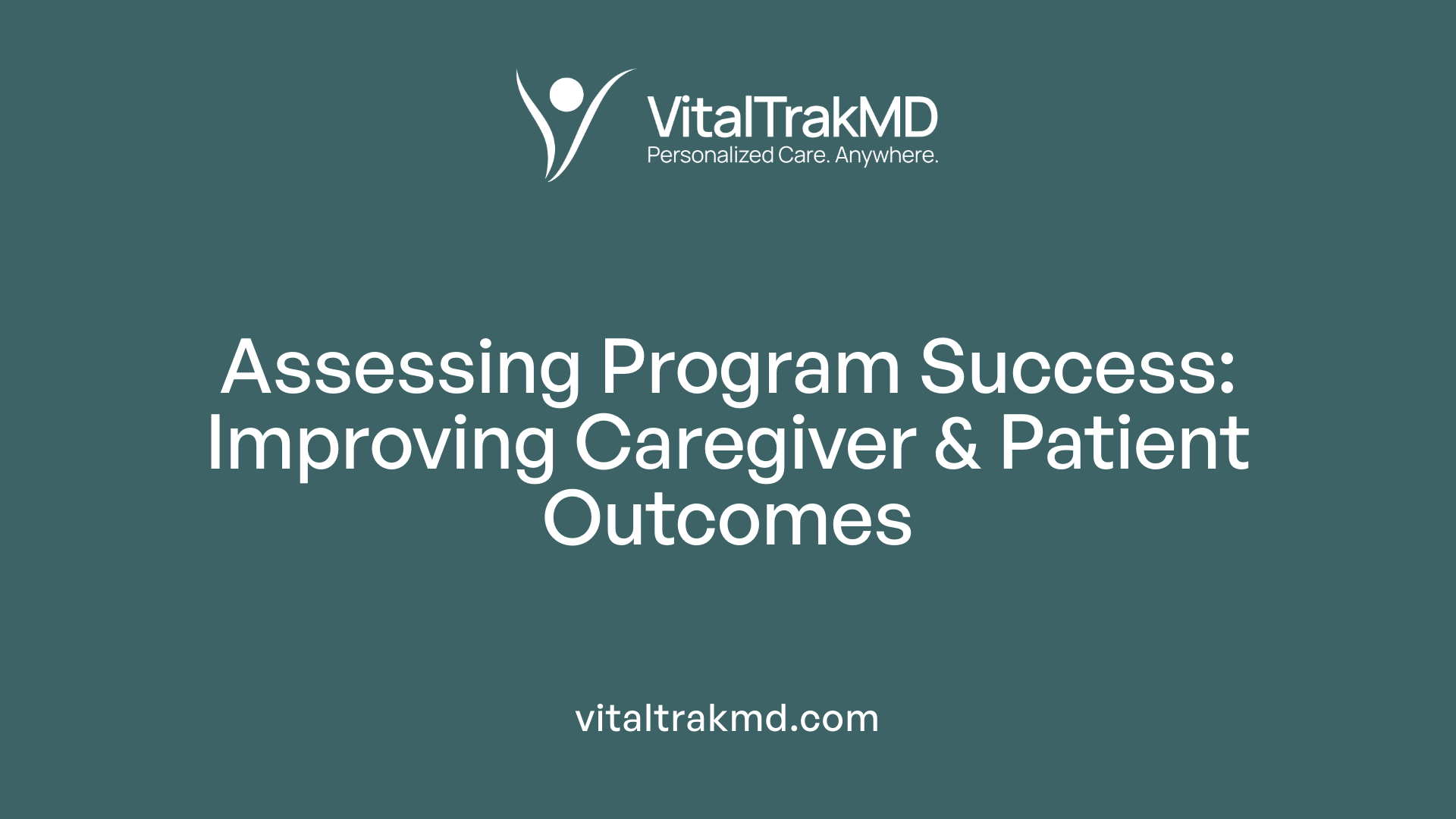
How do wellness programs contribute to overall health improvement?
Wellness programs support better health by promoting healthier behaviors such as increased physical activity and improved nutrition. These positive lifestyle changes often result in more participants engaging in regular exercise and managing their weight actively. Yet, clinical improvements in metrics like blood pressure and BMI are often modest initially and may require ongoing support to maintain.
Metrics such as depression reduction, health self-assessment improvements, emergency visits
Programs like the Chronic Disease Self-Management Program effectively improve participants' health self-assessments and reduce depression levels. This correlates with tangible benefits such as fewer emergency room visits, which averages around $364 in savings per participant. Such outcomes demonstrate direct health and economic impacts that indicate program success.
Falls prevention initiatives provide another important metric, showing significant impacts on safety and costs. For example, some programs achieve a 30% reduction in fall rates and Medicare savings of $938 per participant. The decrease in fear and incidents of falling translates into better quality of life and less need for costly medical care.
Long-term vs short-term outcome assessments
Short-term health assessments can capture immediate behavioral changes and symptom relief. However, to fully gauge wellness program success, long-term evaluations are critical. Sustained improvements in caregiver health, reduced stress, and ongoing ability to provide care hinge on continual engagement and support. Long-term studies highlight the importance of multi-faceted interventions that combine education, emotional support, and respite services to ensure durability of benefits over time.
The Role of Digital Tools in Supporting Caregiver Wellness and Education

How are apps and online platforms used to support caregiver wellness?
Digital tools such as apps and online platforms offer convenient access to health promotion programs tailored for caregivers. These technologies provide caregivers with resources for managing chronic diseases, falls prevention, behavioral health, and nutrition education directly from their homes or other familiar settings.
Apps often include features like symptom tracking, medication reminders, and educational modules that boost caregivers’ knowledge and confidence. Online platforms additionally facilitate virtual support groups and workshops, helping caregivers connect with others facing similar challenges and reducing feelings of isolation.
In what ways do digital tools enhance accessibility and customization for caregivers?
Digital health tools break down geographical and time barriers by offering flexible participation modes, including virtual sessions available during evenings or weekends. This flexibility fits caregivers’ often unpredictable schedules, promoting higher program completion rates.
Customization is achieved through personalized content that addresses individual caregiving needs, such as managing specific chronic conditions or learning problem-solving skills. Privacy controls empower caregivers to engage with sensitive health topics comfortably, encouraging honest communication and tailored support.
How do digital tools protect caregiver privacy?
Robust privacy measures ensure that sensitive health information collected through apps and platforms is securely stored and shared only with authorized parties. This safeguards caregivers’ personal data and fosters trust, a critical aspect when engaging in education and behavioral health programs.
Digital tools represent a vital complement to in-person health programs for caregivers. By enhancing accessibility, customization, and privacy, these technologies help support caregiver wellness, education, and community engagement efficiently and effectively.
Legal Frameworks Safeguarding Caregiver Wellness Programs

Confidentiality and Voluntariness
Caregiver wellness programs must prioritize confidentiality and voluntary participation to protect caregivers' privacy and autonomy. Participants should be fully informed about how their personal and health information will be used and have the choice to opt in or out without pressure. Ensuring these ethical standards helps foster trust and encourages engagement in wellness activities.
Compliance with ADA, GINA, HIPAA, and ACA
Legal compliance is essential for caregiving programs to operate effectively and ethically. The Americans with Disabilities Act (ADA) protects caregivers and care recipients from discrimination based on disabilities, ensuring equal access to program resources.
The Genetic Information Nondiscrimination Act (GINA) safeguards participants against discrimination based on genetic information, which is especially relevant in programs involving health screenings or personalized interventions.
The Health Insurance Portability and Accountability Act (HIPAA) mandates strict data privacy and safeguards patients' and caregivers' health information, which wellness programs must adhere to when collecting or sharing health data.
The Affordable Care Act (ACA) supports caregiver wellness by promoting preventive health services and coverage for chronic disease management programs, enhancing access to essential health promotion resources.
By aligning with these laws, wellness programs maintain legal integrity while effectively supporting caregivers' physical and emotional health needs.
Community Partnerships: Extending the Reach of Caregiver Support
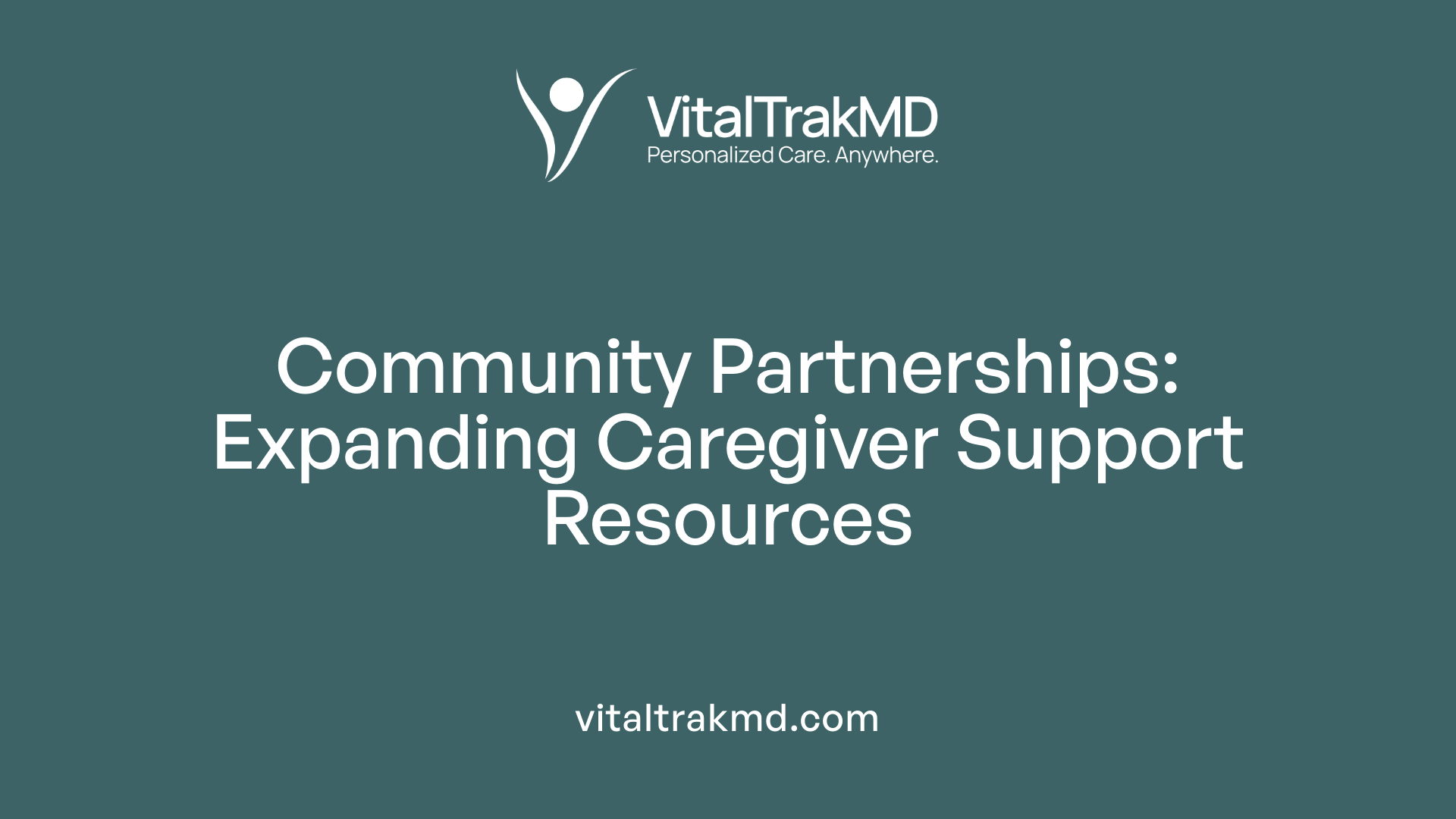
Collaboration between healthcare providers and community organizations
Effective caregiver support hinges on strong partnerships between healthcare providers and community organizations. These collaborations enable seamless communication, ensuring caregivers receive necessary education and resources. Healthcare professionals, particularly nurses, play a pivotal role by assessing caregiver needs, offering tailored information, and linking families to community programs. This cooperative approach fosters a supportive triad among caregivers, patients, and professionals, enhancing shared decision-making and reducing caregiver burden.
Enhancing resource availability and program participation
Community partnerships expand resource availability by hosting evidence-based programs such as the Chronic Disease Self-Management Program and falls prevention initiatives at accessible locations like libraries and senior centers. Caregivers tend to participate more and complete programs when held in familiar group settings. Flexible participation options—including virtual sessions and evening or weekend classes—further increase access. By fostering emotional support networks and promoting caregiver wellness, these partnerships improve program uptake and sustain caregiving capacity, ultimately contributing to better health outcomes for both caregivers and their care recipients.
Flexible Program Scheduling to Accommodate Caregiver Needs

How Do Virtual Sessions, Evening, and Weekend Options Help Caregivers?
Caregivers often juggle demanding schedules, balancing caregiving responsibilities with personal and professional lives. Offering wellness programs through virtual sessions, as well as scheduling evening and weekend options, provides much-needed flexibility. This accessibility allows caregivers to participate without disrupting their primary duties or sacrificing rest.
Virtual sessions eliminate travel time and logistical challenges, making it easier for caregivers to engage from home. Evening and weekend classes accommodate those who work or care for others during regular daytime hours. Such flexibility reduces common barriers, encouraging consistent attendance and completion.
How Does Flexible Scheduling Reduce Barriers to Participation?
By adapting program schedules to caregivers' varied needs, wellness initiatives can overcome obstacles such as time constraints and transportation difficulties. Flexible timing combats these challenges by fitting into caregivers' unique routines, promoting a better work-life-caregiving balance.
Additionally, accommodating caregivers’ schedules helps address their emotional and physical health demands, supporting continued participation in preventive and supportive programs. This, in turn, contributes to improved well-being for both caregivers and their care recipients, enhancing program impact and sustainability.
In summary, flexible scheduling is a crucial strategy to empower caregivers, helping them access vital health promotion programs while managing their complex responsibilities.
The Importance of Emotional Support and Social Connections for Caregivers
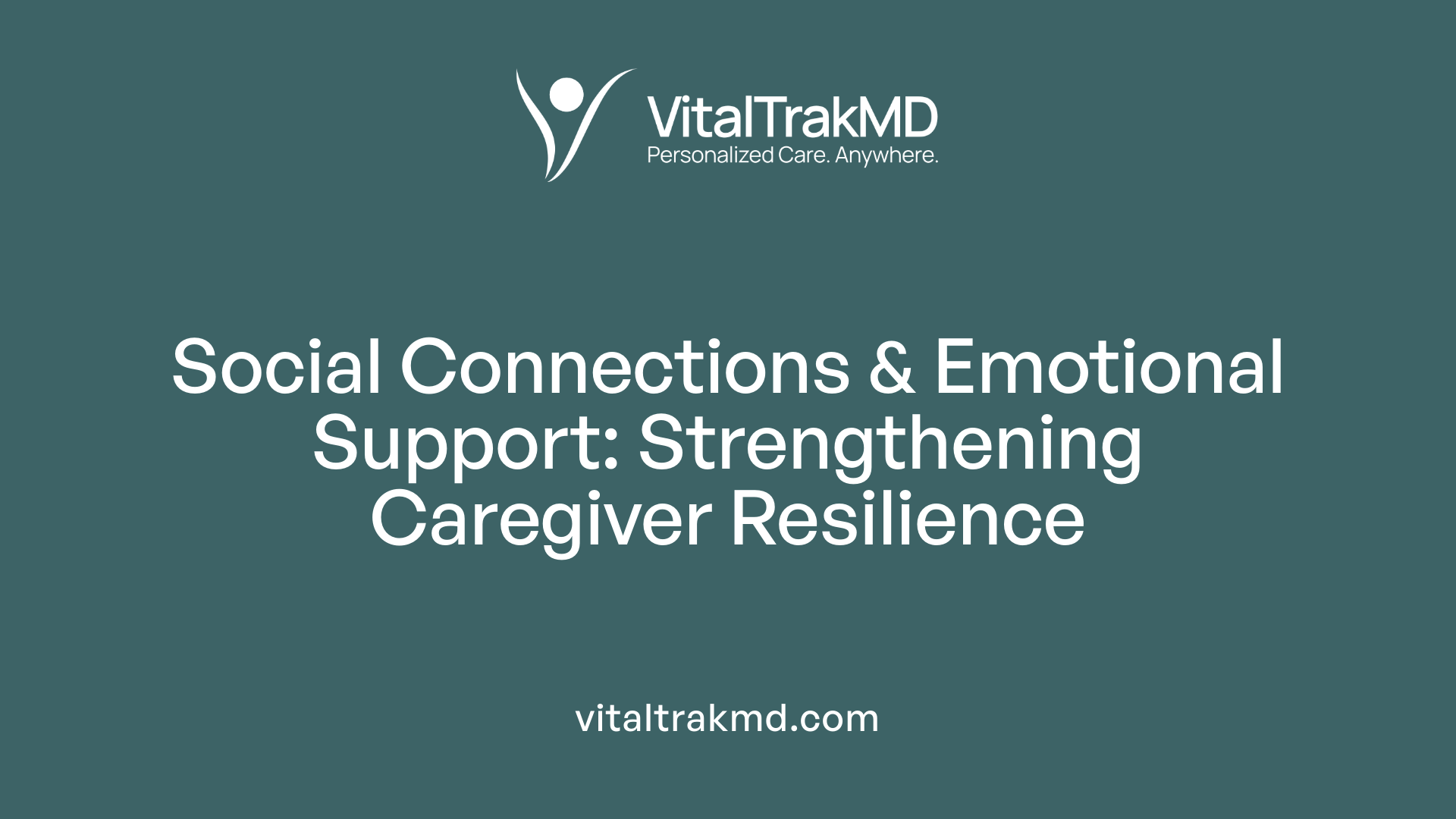
Building supportive communities
Caregivers often face significant emotional and physical demands, which can lead to feelings of isolation and burnout. Building supportive communities plays a crucial role in alleviating these challenges. Programs that foster group participation—especially when caregivers attend sessions alongside others in similar roles—help create a network of shared experiences and understanding. Familiar settings like libraries and senior centers encourage attendance and comfort, making it easier for caregivers to connect and engage.
Reducing isolation and enhancing resilience
Emotional support is a key factor in reducing caregiver isolation. Support groups, counseling sessions, and community gatherings provide spaces for caregivers to express their feelings, share coping strategies, and receive encouragement. Such connections enhance resilience, enabling caregivers to manage stress, depression, and caregiving burdens more effectively. Regular check-ins, peer support, and flexibility in participation modes (including virtual options) make it easier to maintain these vital social bonds.
Overall, fostering emotional support and social connections not only improves caregiver well-being but also helps sustain their ability to provide quality care, promoting better outcomes for both caregivers and care recipients.
Respite Services as a Vital Component of Caregiver Wellness

Providing necessary breaks to reduce burnout
Respite services offer caregivers essential breaks from their demanding roles, helping to alleviate physical and emotional exhaustion. These temporary relief periods are critical in preventing burnout, a common risk due to continuous caregiving stress. By stepping in to provide care, respite services help caregivers recharge, improving their overall health and well-being.
Supporting sustained caregiving capacity
Regular access to respite care supports caregivers in maintaining their caregiving role over the long term. These services not only reduce stress and depression but also promote sustained caregiving capacity by allowing caregivers to manage fatigue and health risks associated with persistent caregiving duties. As a result, respite services contribute to the longevity and quality of care provided to care recipients.
Together, respite services combined with educational programs and emotional support form a comprehensive approach to caregiver wellness. These interventions reduce caregiver burden and improve their ability to meet the needs of those they care for, ultimately enhancing safety and quality of life for both caregivers and recipients.
Group-Based Caregiver Programs Foster Higher Completion Rates

Benefits of Peer Support and Familiar Environments
Caregivers attending health education programs in group settings, especially alongside other caregivers, often experience enhanced peer support. This shared experience fosters a sense of understanding and community, which can alleviate feelings of isolation inherent in caregiving roles. Familiar environments such as libraries and senior centers further contribute to comfort and accessibility, encouraging caregivers to engage more fully and consistently.
Enhanced Engagement and Retention
Studies reveal that caregivers tend to complete health education programs at slightly higher rates than the general population when participating in these group-based formats. The combination of emotional support and convenience promotes sustained attendance and active involvement. This higher retention helps caregivers acquire valuable skills and knowledge necessary for their complex roles, ultimately benefiting both their own well-being and the care recipients they support.
Addressing Behavioral Health Within Weight Loss and Wellness Frameworks

What are the most successful strategies for weight loss?
Effective weight loss goes beyond calorie counting and exercise; it relies heavily on behavioral modification techniques. Programs that integrate stress management and mindful eating have shown the most success in helping individuals maintain weight loss long-term.
Integrating stress management and mindful eating
Stress is a major barrier to sustainable weight control. Incorporating stress reduction methods such as relaxation exercises, meditation, and emotional support helps caregivers and others avoid stress-related overeating or unhealthy choices. Mindful eating encourages awareness of hunger cues and emotional triggers, promoting healthier food decisions and portion control.
Supporting sustainable behavior change
Sustainable weight loss is achieved by fostering consistent, manageable changes over time. Wellness programs that include meal planning, self-monitoring, and social support empower participants to adapt their habits realistically. Caregivers, often under substantial stress, particularly benefit from flexible program formats offering virtual or group sessions that build community and accountability.
By addressing behavioral health through these interconnected strategies, wellness programs create an environment conducive to lasting weight management and improved overall well-being.
The Economic Value of Engaging Caregivers in Wellness and Prevention Programs
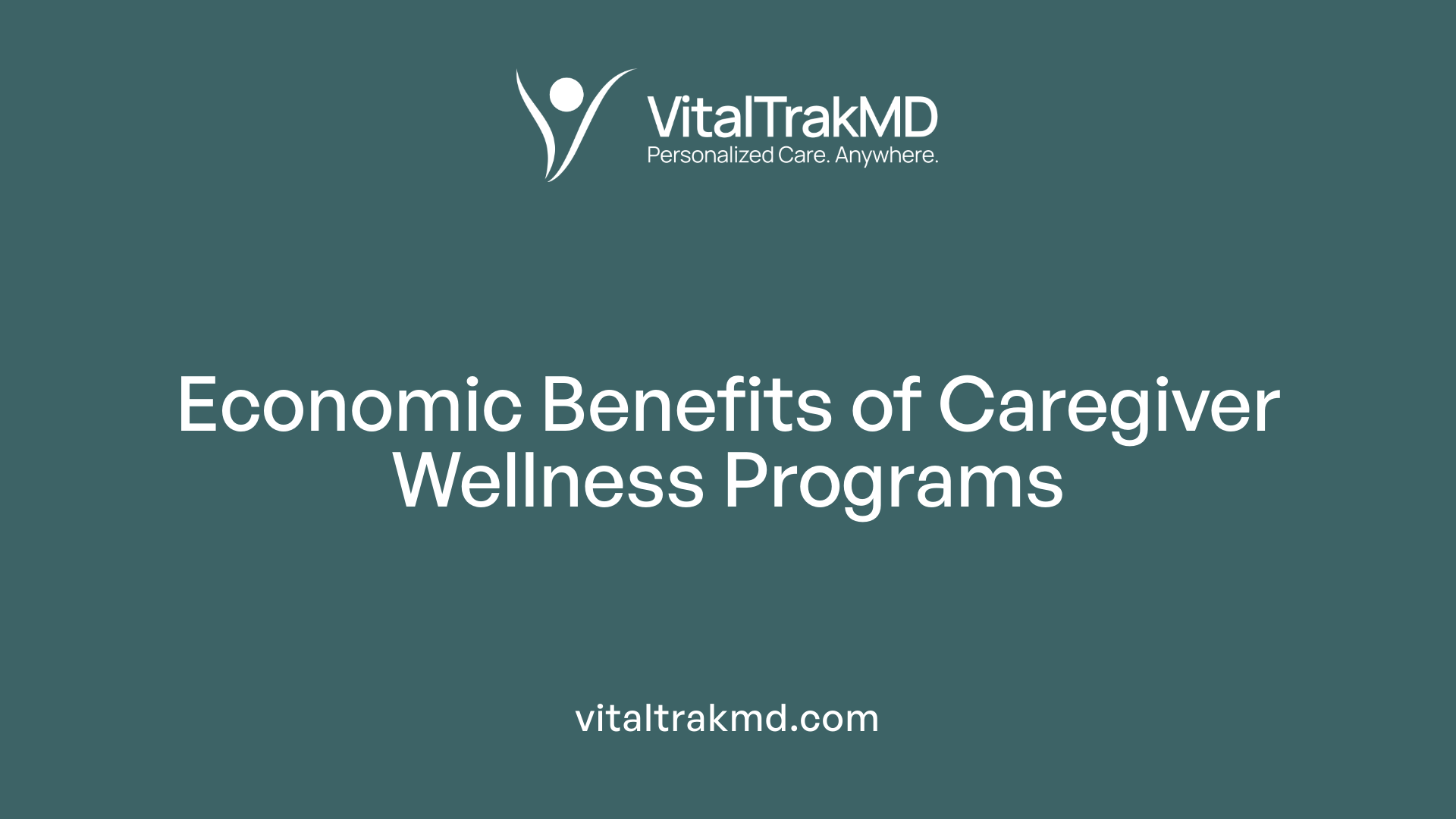
How Do Caregiver Wellness Programs Generate Cost Savings?
Engaging caregivers in wellness and prevention programs leads to tangible financial benefits across healthcare systems. Programs like the Chronic Disease Self-Management Program (CDSMP) have demonstrated reductions in emergency room visits, saving an average of $364 per participant. This is largely due to improved health self-assessment and enhanced disease management skills among caregivers and care recipients.
Falls prevention initiatives further amplify these economic gains. Programs such as 'A Matter of Balance' and 'Stepping On' contribute to a 30% reduction in fall rates among participants. Medicare savings average $938 per individual, with a net savings of $134 per participant attributed to fewer falls and related injuries. These substantial cost reductions highlight the effectiveness of such programs in preventing expensive medical events.
What Is the Return on Investment in Caregiver-Focused Programs?
Investing in caregiver education and support not only enhances quality of life but also delivers measurable economic returns. Community-based chronic disease self-management education programs have attracted more than 14,000 caregivers since 2010, showcasing widespread uptake and commitment.
Supporting caregivers through multicomponent interventions—including education, emotional support, and skills training—reduces caregiver burden, depression, and stress. This decreases the likelihood of costly hospital readmissions and adverse events due to improved caregiver competence in medication management and symptom control.
Nurses and healthcare professionals play a crucial role by integrating caregivers into discharge planning and ongoing care communication, mitigating risks of neglect and readmission. Such collaborative approaches improve safety and reduce healthcare expenses, maximizing the value gained from initial program investments.
A Path Forward: Integrating Hybrid Health Teams to Empower Caregivers
Caregivers are vital contributors to health and wellness, yet they often face significant physical, emotional, and social challenges that threaten their capacity to provide sustained care. Evidence-based programs—ranging from chronic disease self-management to falls prevention and behavioral health support—have demonstrated tangible benefits for caregivers and those they care for, including improved quality of life, reduced depression, and cost savings. Hybrid health teams that blend healthcare professionals, community resources, and digital tools offer a promising approach to delivering targeted, flexible, and comprehensive support. By prioritizing clear communication, collaborative decision-making, and accessible program designs, these teams can empower caregivers to maintain their health and wellness. Investing in caregiver support not only safeguards these 'hidden patients' but also strengthens the entire continuum of care, benefiting individuals, families, and healthcare systems alike.
References
- How to Engage Caregivers in Evidence-Based Programs
- Supporting Family Caregivers in Providing Care
- Steps for Losing Weight | Healthy Weight and Growth
- Weight Management Strategies for Success - Being Well at Yale
- Designing and Managing Effective Wellness Programs
- Wellness Programs on the Rise - PMC
- Do Wellness Programs Work?
- Health And Economic Outcomes Up To Three Years After A ...
- Workplace Wellness Programs Study
Recent articles
Want to Feel Better and Live Healthier?
Join hundreds of patients taking control of their health with personalized care that fits their life – not the other way around.
Rated 4.8/5 by 32+ customers







